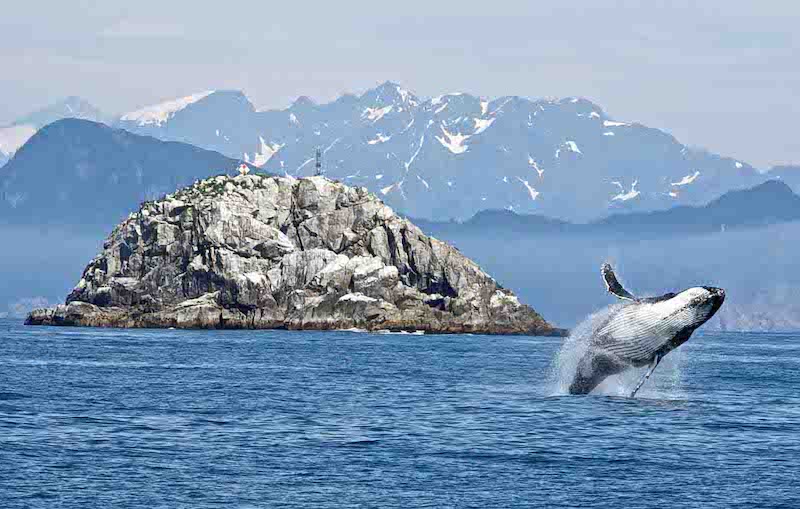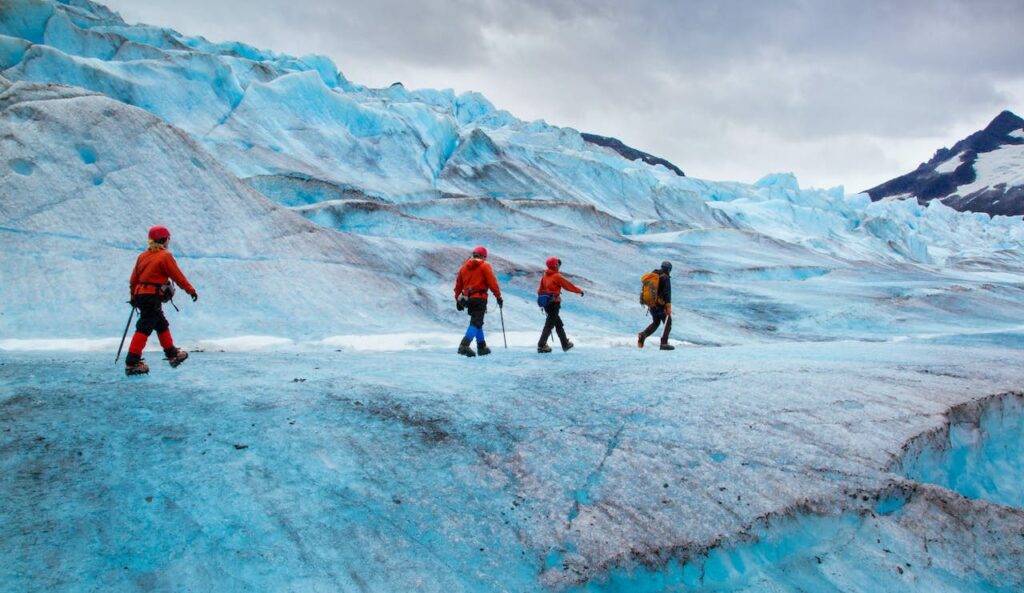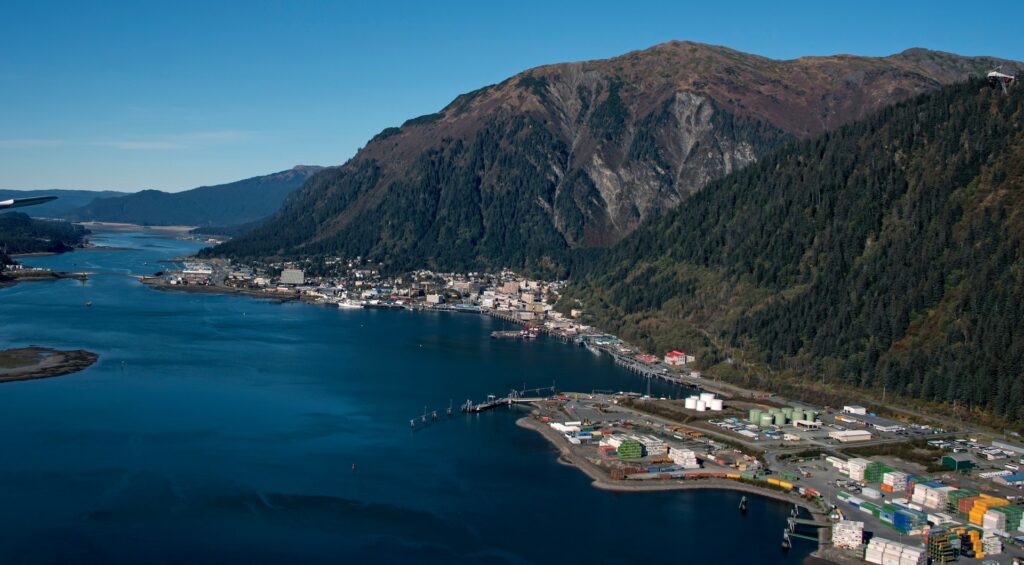Alaska is a state located in the northwest extremity of the United States. It is the largest state by land area, covering an area of approximately 663,300 square miles (1,717,856 square kilometers). Despite its vast size, Alaska is one of the least populous states, with a population of just over 730,000 people.
Alaska is known for its rugged natural beauty, including vast forests, mountains, glaciers, and abundant wildlife. The state is home to numerous national parks and wilderness areas, including Denali National Park and Preserve, which features the highest peak in North America, Denali (formerly known as Mount McKinley).
The state also has a rich cultural history, with significant Native Alaskan populations and a strong tradition of fishing, hunting, and subsistence living. The largest cities in Alaska are Anchorage, Fairbanks, and Juneau, which is also the state capital.
Alaska’s economy is driven by its natural resources, particularly oil, gas, and seafood. The state is a major producer of crude oil and natural gas, with several large oil fields located on the North Slope. Fishing is also a significant industry in Alaska, with the state accounting for a significant portion of the country’s commercial fishing catch.
Tourism is another important industry in Alaska, with visitors drawn to the state’s natural beauty, outdoor activities, and unique cultural experiences. Popular tourist destinations include Glacier Bay National Park, the Kenai Fjords National Park, and the Inside Passage, a scenic coastal route that connects several communities and offers opportunities for whale watching and other wildlife viewing.
Alaska is a unique and fascinating state, with a rich cultural heritage and some of the most stunning natural scenery in the world.

Denali National Park
Denali National Park and Preserve is one of the most popular tourist destinations in Alaska, located in the interior of the state. The park covers an area of 6 million acres (2.4 million hectares), including the highest peak in North America, Denali (formerly known as Mount McKinley), which stands at 20,310 feet (6,190 meters) tall.
The park is known for its vast wilderness and diverse wildlife, including grizzly bears, wolves, caribou, Dall sheep, and moose. Visitors to the park can take guided bus tours, hike, camp, or go mountaineering to explore the park’s natural beauty and wildlife.
The park’s landscape is characterized by rugged mountains, glaciers, tundra, and rivers. One of the park’s most popular attractions is the Denali Park Road, a 92-mile (148-kilometer) gravel road that winds through the park’s wilderness and offers stunning views of the surrounding landscape and wildlife. Visitors can take guided bus tours of the road, which is only open to private vehicles for the first 15 miles (24 kilometers).
Denali National Park also offers a variety of recreational activities, including hiking, backpacking, mountain biking, and fishing. The park has over 340 miles (547 kilometers) of hiking trails, ranging from short day hikes to multi-day backpacking trips. Visitors can also participate in ranger-led programs, attend cultural demonstrations, and learn about the park’s history and conservation efforts at the visitor center.
Denali National Park is a must-visit destination for anyone traveling to Alaska. Its stunning natural beauty, diverse wildlife, and opportunities for outdoor recreation make it an unforgettable experience for visitors of all ages and interests.

Katmai National Park
Katmai National Park and Preserve is a remote and rugged wilderness area located in southern Alaska, on the Alaska Peninsula. The park covers an area of 4 million acres (1.6 million hectares) and is known for its stunning natural beauty, diverse wildlife, and abundant salmon runs.
One of the park’s most popular attractions is its population of brown bears, which can be seen fishing for salmon in the park’s many rivers and streams. The park is also home to other wildlife, such as moose, caribou, wolves, and eagles.
Visitors to Katmai National Park can take guided bear viewing tours, hike through the park’s wilderness, go fishing or kayaking, and explore the park’s many volcanic features, including Mount Katmai and the Valley of Ten Thousand Smokes, a volcanic ash-filled valley created by the eruption of Novarupta in 1912.
The park is only accessible by air or water, and there are no roads or services within the park boundaries. Visitors typically fly into the nearby town of King Salmon and then take a small plane or boat to the park. There are a few lodges and campgrounds within the park, but visitors must be prepared for primitive camping conditions.
Katmai National Park offers a unique and unforgettable wilderness experience for those willing to make the journey. Its stunning landscapes, diverse wildlife, and opportunities for outdoor recreation make it a must-visit destination for anyone interested in exploring the natural beauty of Alaska.

Kenai Fjords National Park
Kenai Fjords National Park is a stunning wilderness area located on the Kenai Peninsula in southern Alaska. The park covers an area of 669,984 acres (271,140 hectares) and is known for its breathtaking fjords, glaciers, and abundant marine wildlife.
The park is home to over 40 glaciers, including the Harding Icefield, which covers over 700 square miles (1,800 square kilometers) and feeds numerous smaller glaciers that flow into the surrounding fjords. Visitors to the park can take boat tours or kayak through the park’s fjords to get up close to the glaciers and witness their stunning beauty.
Kenai Fjords National Park is also home to a rich marine ecosystem, with abundant marine wildlife, including humpback whales, orcas, sea otters, and seals. Visitors can take wildlife watching tours to see these animals in their natural habitat, or go fishing, kayaking, or scuba diving to explore the park’s marine environment.
The park has several hiking trails that offer stunning views of the surrounding landscape and wildlife. The Exit Glacier trail is one of the most popular hikes in the park, offering visitors the opportunity to hike up to the face of the glacier.
Kenai Fjords National Park is a must-visit destination for anyone traveling to Alaska. Its stunning natural beauty, diverse wildlife, and opportunities for outdoor recreation make it an unforgettable experience for visitors of all ages and interests.

Mendenhall Glacier
Yes, of course! The Mendenhall Glacier is a glacier located in the Tongass National Forest near Juneau, Alaska. It is about 13.6 miles (22 kilometers) long and is one of the most popular tourist attractions in Juneau.
The Mendenhall Glacier is part of the Juneau Icefield, which covers over 1,500 square miles (3,880 square kilometers) of the Coast Mountains. The glacier itself is fed by the icefield and flows down into the Mendenhall Valley, where it ends at Mendenhall Lake.
One of the unique features of the Mendenhall Glacier is the presence of ice caves. These caves are formed by meltwater that flows through the glacier and carves out tunnels and chambers. Visitors can sometimes access these ice caves, but it is important to do so safely and with the guidance of a trained professional.
The Mendenhall Glacier is also an important scientific research site, as it provides valuable information about climate change and glaciology. In recent years, the glacier has been receding at an alarming rate due to rising temperatures and other climate factors.
If you plan to visit the Mendenhall Glacier, there are several ways to experience it, including hiking trails, guided tours, and boat excursions. It is important to respect the glacier and its surrounding environment, as it is a delicate ecosystem that is easily impacted by human activity.

Juneau in Alaska
Juneau is the capital city of Alaska, located in the panhandle of the state. It is the second-largest city in Alaska by population, with around 32,000 residents. The city is named after gold prospector Joe Juneau, who discovered gold in the area in 1880.
Juneau is a popular tourist destination, known for its stunning natural scenery and outdoor recreational activities. In addition to the Mendenhall Glacier, other popular attractions in Juneau include the Mount Roberts Tramway, which offers panoramic views of the city and surrounding wilderness, and the Alaska State Museum, which showcases the history and culture of Alaska.
Juneau is also a hub for government and politics in Alaska. The Alaska State Capitol is located in the city, as well as the Governor’s mansion and other state government buildings. The city is accessible only by boat or plane, as there are no roads connecting Juneau to the rest of Alaska.
The economy of Juneau is largely based on government jobs, tourism, and fishing. The city has a vibrant arts and culture scene, with numerous galleries, theaters, and music venues. The Juneau Symphony, the Perseverance Theatre, and the Alaska Folk Festival are just a few of the cultural events that take place in the city each year.

Glacier Bay National Park
Glacier Bay National Park and Preserve is a national park located in Southeast Alaska, about 60 miles (97 kilometers) west of Juneau. It covers an area of over 3.3 million acres (1.3 million hectares) and is known for its stunning glaciers, fjords, and diverse wildlife.
The park is home to more than 50 named glaciers, including the Margerie Glacier and the Grand Pacific Glacier, which are two of the most popular attractions in the park. Visitors can explore the park by boat, kayak, or on foot, and can take guided tours to learn about the park’s history and ecology.
In addition to its glaciers, Glacier Bay is also known for its rich marine ecosystem. The park is home to a variety of marine mammals, including humpback whales, orcas, sea otters, and harbor seals. Visitors can also see a variety of bird species, such as bald eagles and puffins, and can hike through the park’s wilderness to spot grizzly bears, moose, and other wildlife.
Glacier Bay National Park and Preserve is a designated wilderness area, which means that it is protected and preserved for future generations to enjoy. The park is managed by the National Park Service and is open year-round, although access to some areas may be limited during the winter months.

Wrangell St. Elias National Park
Wrangell St. Elias National Park and Preserve is a national park located in southeastern Alaska, near the border with Canada. It covers an area of over 13 million acres (5.3 million hectares), making it the largest national park in the United States.
The park is known for its rugged, mountainous terrain, which includes nine of the 16 highest peaks in the United States. Visitors to the park can explore its wilderness on foot, by vehicle, or by plane, and can see a variety of natural wonders, including glaciers, rivers, and wildlife.
One of the most popular attractions in the park is the Kennecott Mines, which are a collection of historic copper mines that operated in the early 20th century. Visitors can take guided tours of the mines and learn about the history of copper mining in the area.
Other popular activities in the park include hiking, camping, fishing, and rafting. The park is also home to a variety of wildlife, including grizzly bears, moose, caribou, and Dall sheep.
Wrangell St. Elias National Park and Preserve is a designated wilderness area, which means that it is protected and preserved for future generations to enjoy. The park is managed by the National Park Service and is open year-round, although access to some areas may be limited during the winter months due to snow and ice.
You may be interested to know about:
